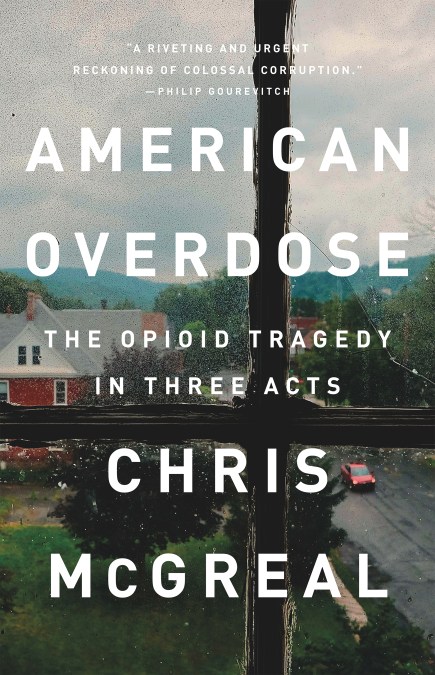American Overdose. The Opioid Tragedy in Three Acts
Formerly in this blog you may have read about opioid epidemics. In the US is a great social and public health tragedy. If you want some details about fentanil consumption in Catalonia, check this report (p.153-155).
In the book America overdose, you'll find an exceelent description about what has happened in US in practical terms. Wirtten by a journalist from The guardian, it may help any public health official of any country to understand the huge danger we have to confront. The starting point for McGreal’s deeply reported investigation is the miners promised that opioid painkillers would restore their wrecked bodies, but who became targets of “drug dealers in white coats.” And says (in chapter 21):
It would be a mistake to conclude that responsibility for the opioid epidemic lies only with the greed of the drug companies or that it is shared solely with corrupt doctors and pharmacists who profited from mass prescribing. They were facilitated by politicians, regulators, and a broader medical industry with an agenda or that chose not to see. The opioid makers were helped in that because, for many years, the primary victims were those it was easy to look away from—the “dumbass hillbillies,” as Willis Duncan put it.
Purdue may have targeted some of the poorest parts of Appalachia because that’s where the data said opioids were already being prescribed. But it proved a convenience that these regions were among the most marginalized in the country and the easiest to stigmatize as the drug makers pursued the disreputable tactic of blaming the victims for their addiction.
Like the nineteenth-century opium dealers, the painkiller manufacturers used the power of the huge profits of addiction to keep the faucets of mass prescribing open. The quarter of a billion dollars a year the drug industry spends on lobbying bought the complicity of Congress and organizations such as the American Medical Association through silence and distraction. The din of money drowned out the warnings sounded by Dr. Art Van Zee about the devastation already wrought to his Virginia community in the late 1990s and the research by doctors such as Jane Ballantyne that should have prompted critical questioning of the claims made for opioids. Congress and the FDA were told loudly and clearly that a national disaster was unfolding more than a decade before the CDC’s Tom Frieden called it an epidemic.
Drawing on the tobacco companies’ playbook, opioid manufacturers obscured the evidence of the dangers of their products even when it was staring the industry in the face. Instead, the drug makers and their front organizations sought to discredit those who advocated caution.
